Fluctuating greenhouse temperature? We’ll walk you through 8 practical solutions so you can keep your greenhouse warm at night and even on cloudy days. One way even harnesses Mother Nature’s power so you can keep your electricity costs down.
Up for a challenge?
From an oil-filled heater, livestock, to insulation, here’s how you can heat a greenhouse. But first, let’s find if you really need to heat your greenhouse during winter.
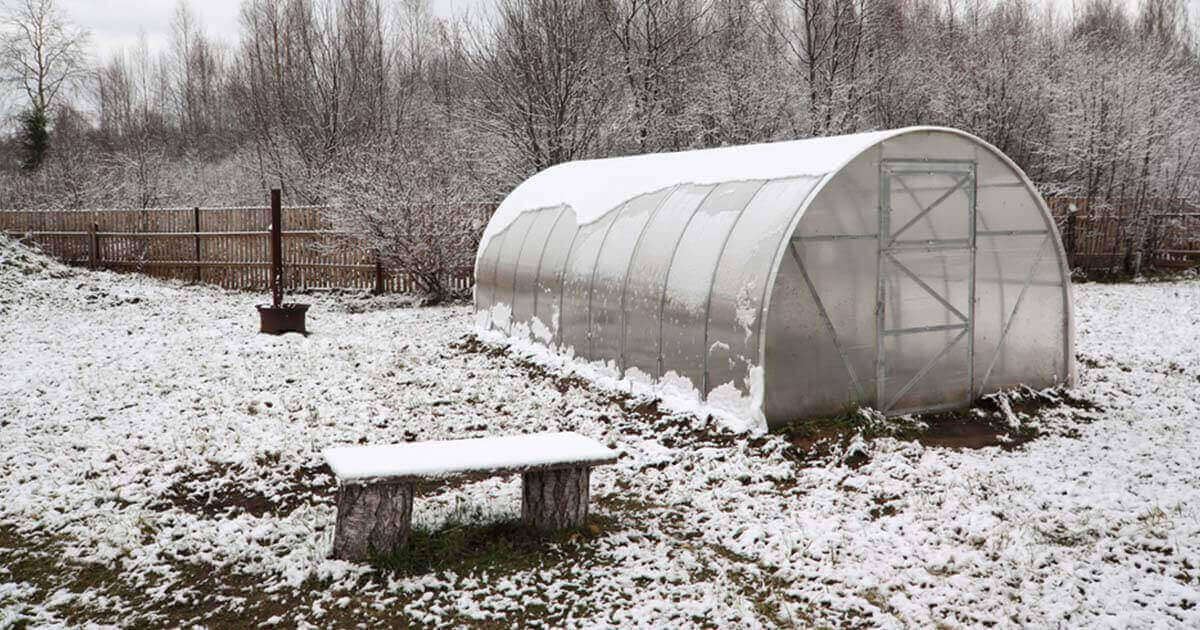
Do You Need To Heat Your Greenhouse in Winter?
This is an important question and one you should consider long and hard before you go through the process of adding supplemental heat to your greenhouse.
In some climates, heating your greenhouse in the winter is entirely unnecessary.
Suppose your nightly winter temperature rarely dips below 30 degrees. In that case, you can utilize your greenhouse to grow a variety of cold-tolerant veggies right through till spring without any extra work.
On the other hand, if you experience harsh winters with temperatures frequently in the single digits or below, adding some form of supplemental heating will be necessary, no matter how hardy your crops are.
Of course, if you plan to use your greenhouse for warm-season vegetables in the middle of January, then you will probably have to use more than one of the methods utilized below to keep your plants happy and productive. This is true even if you live in a more moderate climate.
8 Practical Greenhouse Heating Options
Once you have decided whether heating your greenhouse is necessary for your climate and your growing goals, it is time to look at some of your heating options.
All the options listed below are practical to implement (meaning they will not require a ton of labor on your part) but vary in how expensive and environmentally friendly they are. As you read through each section, take some time to consider the potential cost to you and the planet and how each aligns with your goals.
Solar Energy
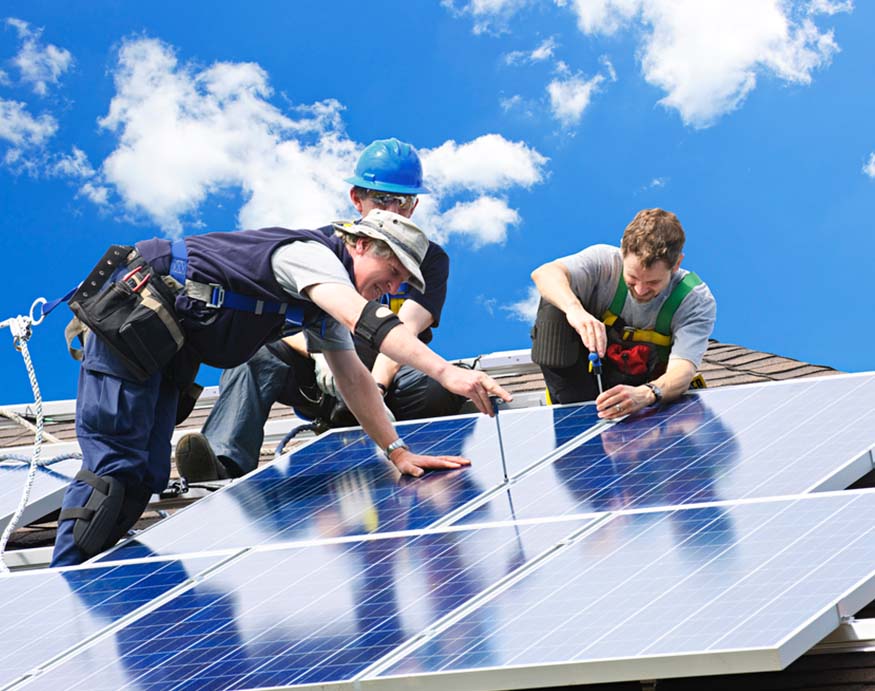
When it comes to using solar energy to heat a greenhouse, you have two options: solar panel-powered heaters and passive solar capture.
Solar Powered Heaters
Solar-powered heaters are what they sound like—small heating units that run off solar energy.
Unfortunately, these types of heating units are far more difficult to find than you might imagine. That’s because heaters require a lot of energy to operate, which translates to a need to install multiple solar panels.
For example, to run a 1,500-watt heater, you would need to install fifteen 100-watt solar panels! If you put that many solar panels on your greenhouse, there wouldn’t be any room for the light to get in.
Even sizing up and getting the far more expensive 500-watt solar panels would require three panels–still, more than you would want to place on a greenhouse roof.
Unless you have solar panels already in place to provide energy for your home, a solar-powered greenhouse heater is not likely to be an option.
Passive Solar Heating
But don’t discount the sun’s worth yet.
Passive solar heating in a greenhouse is one of the most cost-effective ways to grow crops over the winter.
When my greenhouse got up to 101 degrees, it was only about 42 degrees outside. That’s a lot of extra heat generated with zero effort. Finding a way to capture that heat and redistribute it throughout the night will allow you to grow healthy veggies in the dead of winter without raising your power bill.
Pro Tip: The key to passive solar heating in a greenhouse is to use a lot of material with a high thermal mass. It can be soil, rocks, brick, and water. These materials tend to hold on to heat after the original heat source has gone away.
By creating raised beds with extra soil, lining your greenhouse paths with stone or brick, and adding large flat rocks wherever possible, your greenhouse will absorb more heat throughout the day. You can also place large tanks or jugs of water to collect heat.
Once the air cools in the evening, these surfaces will begin to release this heat back into the air.
Another option for utilizing passive solar is to create a heat sink.
To do this, dig a hole in the center of your greenhouse two to three feet deep. The most effective heat sinks should be just under one-third the size of your greenhouse. For example, a 3 by 3 sq ft hole will work perfectly for a 10 by 10 sq ft greenhouse.
Place a tube, such as a wide PVC pipe, in the center of the hole and backfill the area with river rocks, gravel, chunks of concrete, or brick. These high thermal mass materials will absorb heat throughout the day. The heat will then dissipate back into the air through the tube overnight.
Heat sinks optimized with a solar fan or pump to move air in and out of the ground are considered ground-source heat pumps.
Hot Water Heating
Hot water heating is another great way to use the sun’s free energy to heat your greenhouse.
Solar water heating cells use the power of the sun to heat coiled water lines. These water lines then run down into the greenhouse to fill a large barrel with hot water. The heat from this water container radiates out, heating the air in the greenhouse.
Alternatively (and more effectively), the hot water lines can be placed directly in the flower beds to heat the soil.
A water pump keeps the water circulating through the solar panel, so your greenhouse can continuously stay warm.
You can also use solar water heaters with boilers, wood burners, and electrical heating devices. Coiled water lines can even be placed inside a compost bin. The heat generated during decomposition is enough to heat the water lines and effectively warm a small greenhouse.
This type of heating can take some time to set up and a little investment in maintenance. The pump will cost some to run, but simple solar options are available as well.
Greenhouse Heater
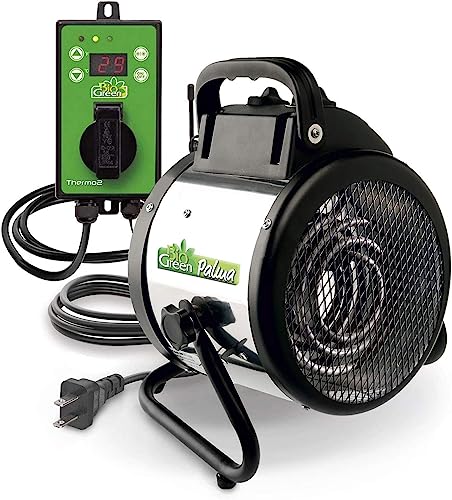
If you’re willing to pay to heat your greenhouse, then you have several simple options available to you. The most efficient of these options tend to be an electric heater, like this greenhouse heater from Bio Green.
To use an electric heater, you will need to have a power supply available in your greenhouse.
Assuming you have an outlet available or a long extension cord, this heating method’s time investment is almost zero. But, keep in mind, heating the air of a greenhouse is not very efficient.
Greenhouses are built to maximize light (among other things—click to learn more about how a greenhouse works). Unfortunately, it often comes at the expense of insulation. That is why greenhouses cool off so quickly once the sun goes down. There is simply little in the structure of a greenhouse to hold the heat in.
Because of this, heating the air in a greenhouse is the least efficient approach. If you go the electric heater route, you can expect the heater to run more or less constantly whenever the outside temperature is less than the programmed temperature.
That said, this is still one of the easiest solutions to implement. It is a perfect option for climates that only experience the occasional cold snap.
Learn More: What is a Cold Frame?
Oil Filled Heater
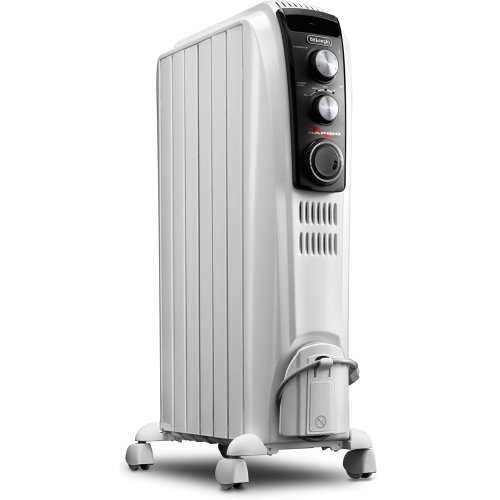
Oil-filled heaters are similar to electric heaters but can be less costly to run, making them a better choice for a greenhouse that will probably require constant operation through the night and cloudy days.
Like an electric heater, these units require a power supply to run. Electricity is necessary to heat the reservoirs that hold the oil. Once the oil is heated, it spreads throughout the unit, warming the surface. This heat is transferred to the air via convection.
The other advantage to using an oil-filled heater over an electric heater is that the oil heater will not dry out the air.
The humidity in a greenhouse helps stabilize the temperature and is vital for plant growth. Electric heaters with blowers tend to dry out the air, reducing the humidity level. On the other hand, an oil-filled heater uses gentle convection heat to warm up the greenhouse, which only has a minimal effect on humidity.
Learn more: Check out our list of the best oil-filled heaters to find out how these units work and which is suitable for your greenhouse.
Kerosene Heater

If you don’t have access to electricity in your greenhouse, then a kerosene heater is a much better option. Most of these units run exclusively on a refillable kerosine tank. No outlets or extension cords are necessary.
Like electric heaters, they can dry out the air. And like both types of heaters mentioned above, they will probably need to run almost constantly to keep your greenhouse at a consistent temperature overnight during the winter. But, on the plus side, kerosine tends to cost less than electricity.
Pro Tip: You have to take some precautions when using these heaters in enclosed spaces, especially inside polycarbonate greenhouses.
These heaters can put out a lot of heat, and that heat is most concentrated next to the flame element. If you set your kerosine heater too close to a wall of polycarbonate or PVC sheeting, it can melt.
For the sake of safety and efficient heating, always place your heater in the center of the greenhouse, away from plants and other combustible items. You can read more about kerosene heater safety here.
Use Germination Mats

For targeted heating in a greenhouse, germination mats are a great choice. These flat mats work similarly to heating pads used to care for sore muscles and injuries. They do not produce enough heat to warm the air but can be very effective for heating soil to encourage better root growth, especially during germination.
Germination mats will not work for heating in-ground or raised beds. They aren’t a great choice for heating large pots either. But they work very well for heating trays of shallow pots and seedling trays.
If you plan to grow cold-season plants throughout the winter, these mats will encourage faster germination so you can turn over your beds more quickly. You can even use them to keep small flats of flowers and greens from freezing during unexpected cold snaps.
Pro Tip: Germination mats are inexpensive and easy to use but only offer a limited heating potential to particular areas of the greenhouse.
Look for germination mats that come with a programmable thermostat, like this mat and thermostat set from Vivosun. These types allow you to select the exact temperature you want the soil to be. Not only will this give you more control for battling fluctuating winter temperatures, but you will also be able to use the mat in the spring for germinating hot-season veggies with particular temperature needs.
Related Article: Starting Seeds in a Greenhouse
Use Livestock
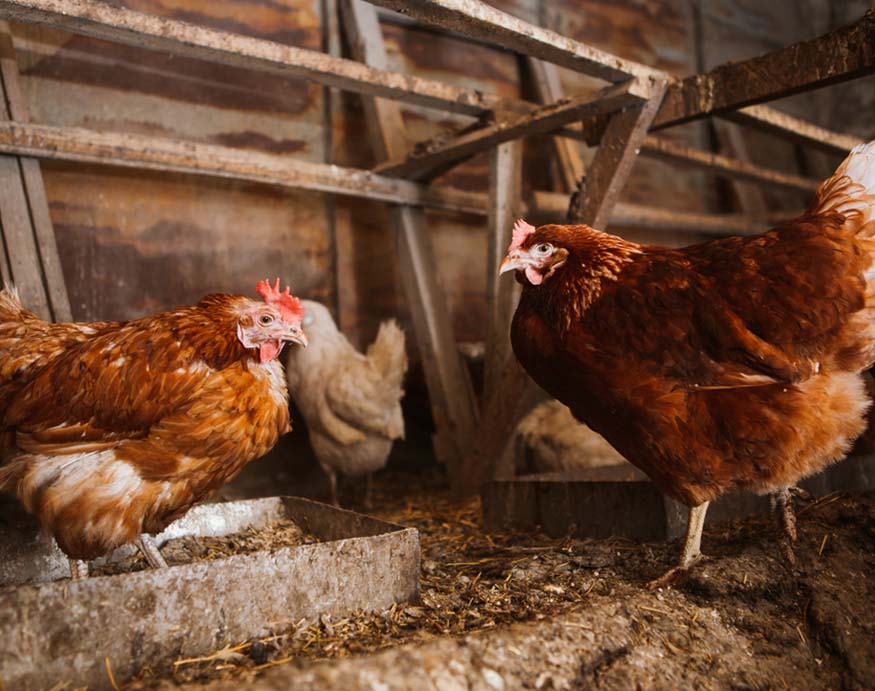
No, we’re not suggesting you drag a cow into your greenhouse to keep it warm at night. Though, that would be pretty effective, assuming you could keep Bessie from eating your plants.
What we’re talking about is creating a dual-purpose greenhouse/small animal house. Housing your poultry coop, pig house, or bunny hutch inside your greenhouse, or even having the two structures share a common wall, can help stabilize temperatures overnight.
Not only will the body heat from the animals help warm things up, but so will their droppings. If you are already using bulb heaters or other heater types to warm the animal enclosure, then placing the enclosure in the greenhouse allows you to put that heat to double use to maximize your efficiency.
How feasible this option depends mainly on the kind of animals you have on hand and your coop and greenhouse setup.
Use a Hotbed
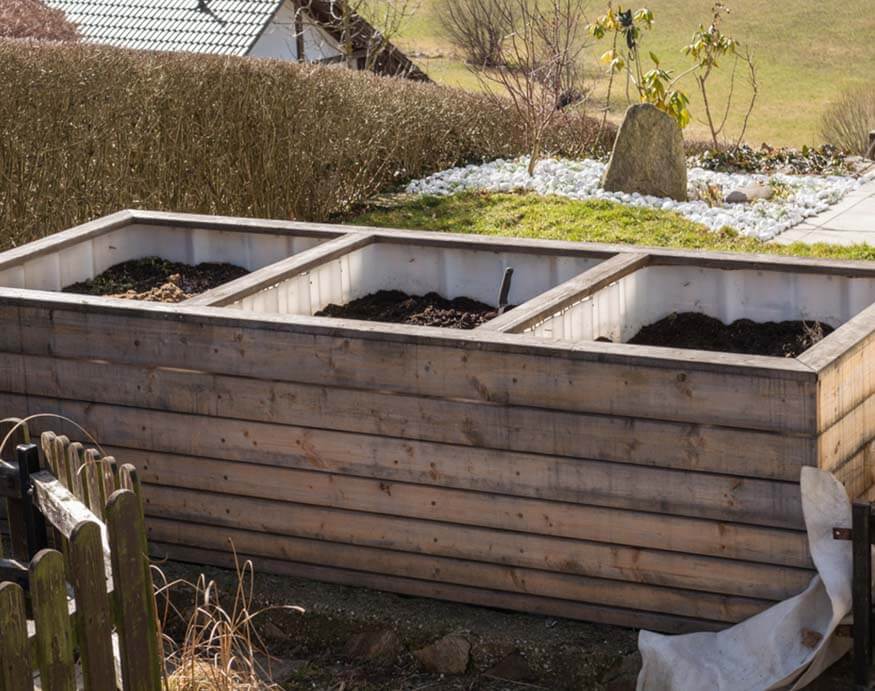
One of the most effective, zero-cost ways to heat your greenhouse over the winter is to turn your planting beds into hotbeds.
Hotbeds utilize the heat created during decomposition to warm the soil the plants are growing in. If you are working with in-ground beds, you will have to do some digging to make these, but the payoff is worth it. You can also construct raised beds and fill them with the needed material to avoid digging at all.
Start by filling the bottom of the bed (about three and a half feet deep for in-ground beds) with two to three feet of horse manure and straw. If you don’t have access to horse manure, you can use a mix of decaying leaves, kitchen scraps, and other green matter. Follow the same ratios you would when building a simple compost pile.
Top the bed with about six inches of potting soil and plant your crops.
Throughout the winter, the manure or compost mixture will continue to decompose. This heat will rise through the soil to keep roots warm and happy and far from freezing. Some of this heat will even dissipate into the air around the plant foliage.
Pro Tip: For best results, use raised row covers, plastic sheeting, or angled glass panels to hold the heat near your plants.
Other Greenhouse Heating Considerations
Some of the above greenhouse heating techniques will work better than others. No matter which method you choose, you can do things to help it be more effective.
Here are a few more considerations you’ll want to address to maximize your greenhouse heating potential.
Air Movement
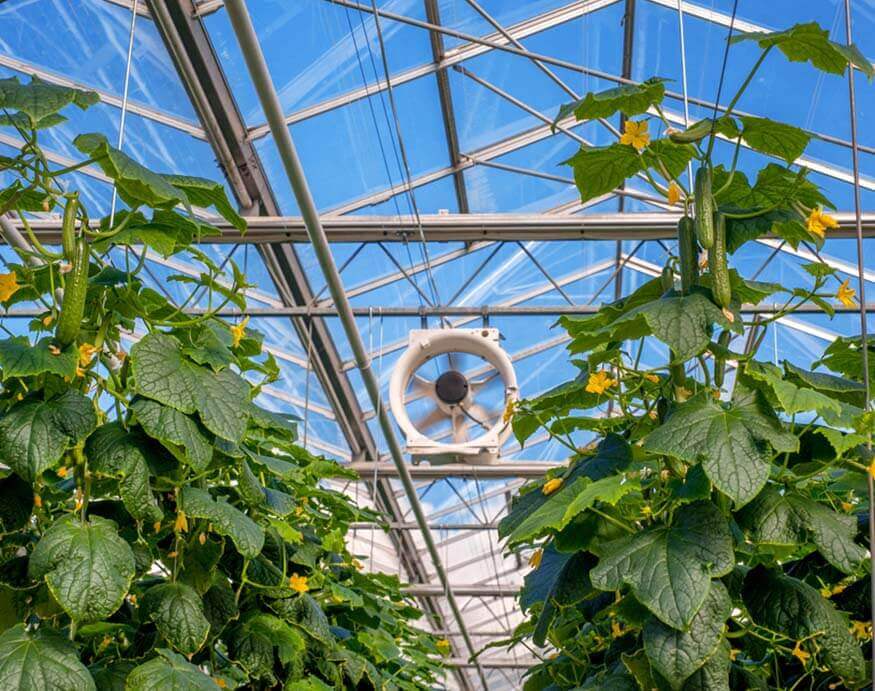
We all know heat rises. In a greenhouse, where plants are typically located on the floor, this is precisely the opposite of what you want to happen in winter. Not to mention that the ceiling of greenhouses is where the most air escapes. If you’re going to hold onto the warm air you’ve created and put it to good use, you need to keep it closer to the ground.
The key to doing this is air circulation.
Placing fans near the ceiling of your greenhouse will help push rising warm air back down toward the plants before it has a chance to escape or cool.
You don’t want the air to move too fast because it cools the air rather than simply circulating it around. So, set your fans to their lowest setting to create a gentle breeze, but one that does not feel cool to the skin.
Air circulation also has the effect of evening out pockets of excessively cold air that may form near the greenhouse walls—a good thing if that’s where your plants happen to be.
To avoid adding to your electric bill, choose a solar fan with batteries that can run overnight off energy collected during the day, such as this easy solar fan kit from Pumplus.
Grow The Right Plants
Choosing the right plants may be the most important thing you can do to ensure the heat you generate is put to good use. Hot-season plants such as tomatoes and peppers require an excess of heat to produce well. They also need supplemental light if you want to grow them in the winter.
This equates to a lot of extra money being spent on heating and lighting.
Instead, look for plants that prefer cooler temperatures, and that can grow with limited daylight.
Cool-season plants can withstand surprisingly low temperatures, and they grow well even during the shortest days of the year. In most climates, you can grow these types of plants straight through the winter with only the most basic techniques outlined above.
Here are some of the most cold-hardy crops worth considering for your minimally-heated winter greenhouse:
- Carrots
- Kale
- Beets
- Spinach
- Turnips
- Garlic
- Green onions
- Bulb onions
- Endive
- Collard greens
- Arugula
- Cabbage
- Swiss chard
- Peas
- Celery
- Broccoli
- Brussels sprouts
Look for varieties of these veggies marketed as frost-tolerant for the best outcome.
Learn more: Check out our winter greenhouse gardening guide so you can grow and harvest vegetables even when it’s freezing outside.
Use Thermal Mass

We talked about thermal mass above as a way to utilize solar energy. But thermal mass works to maximize heat retention in a variety of situations.
If you are heating your greenhouse with an electric or kerosene heater, adding more thermal mass to the space’s interior will help capture heat you would otherwise lose. In doing so, you will need to run these costly heaters less often.
Similarly, thermal mass can capture and hold heat put out by hot water heating and livestock. Even hotbeds release some heat into the air that surrounding stones or water jugs can reclaim.
Here are some materials worth adding to your greenhouse to help capture heat and better regulate temperatures:
- Brick
- Cinder blocks
- Stones
- Gravel
- Barrels or jugs of water
- Concrete
- Clay
- Soil
- Logs
You can maximize your use of thermal mass materials by creating raised beds with extra soil, adding brick, stone, or gravel pathways, setting water jugs in your planting beds, and lining beds with bricks instead of boards.
Insulate Where Possible
One of the biggest reasons you need to put so much work into heating a space that routinely gets to triple the outside temperature during the day is a lack of insulation.
As we discussed before, this lack of insulation performs a purpose: it allows plenty of light in. But there are still a few things you can do to maximize heat retention without compromising how much light your plants receive.
All that light from the sun only ever enters your greenhouse on the southern side. It means you can easily add extra insulation to your greenhouse’s northern walls without affecting how much light your plants receive.
If possible, construct your greenhouse with solid walls on the northern side. Some greenhouse kits are built this way, but most utilize an entirely transparent design. If your greenhouse is the latter type, use styrofoam panels or bubble wrap to add an extra layer of protection on the north side.
Keep in mind that white and shiny surfaces will help reflect heat and light away from these cold northern walls and back toward your plants. If you have solid walls here, paint them white. If using other forms of insulation, opt for those of a lighter color or reflective material.
Besides adding wall insulation, be sure to seal and cover any areas where cold air may get through, such as around doors, windows, and vents.
Use Mulch
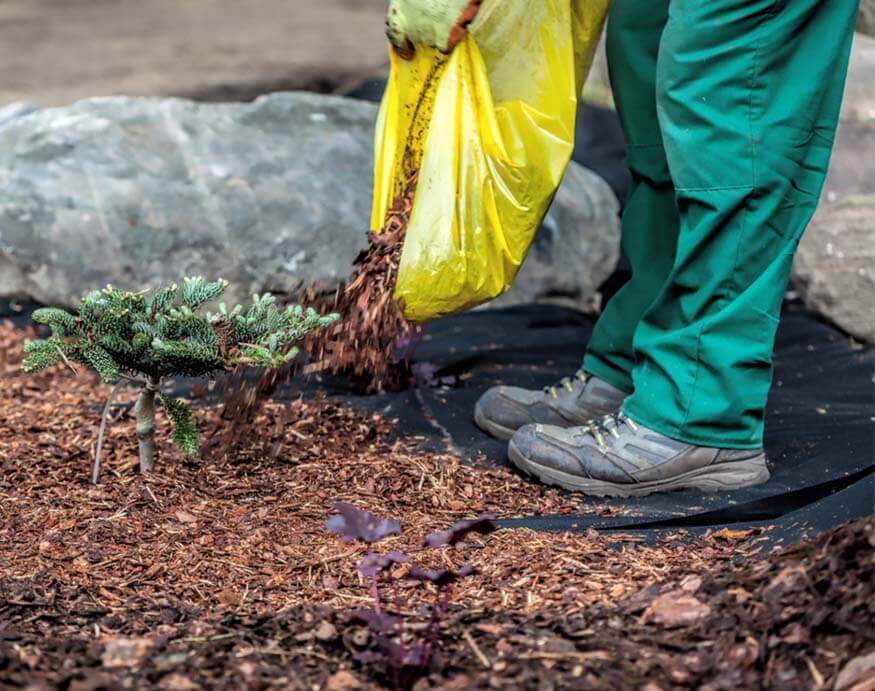
Because soil has a naturally high thermal mass, insulating it can be even more effective than insulating your structure’s walls. Doing so will help keep the heat absorbed by soil during the day from escaping as the air cools.
One of the simplest ways to insulate your soil (and the plants growing in it) is mulch.
Mulch comes in many forms, with some having better insulative protection than others. Straw is one of the best insulators and can be found relatively cheap, especially in the fall. Cedar bark mulch is another common material that can double as pest control in the summer.
You can even utilize dead leaves, grass clippings, and evergreen boughs to save money.
Row Covers
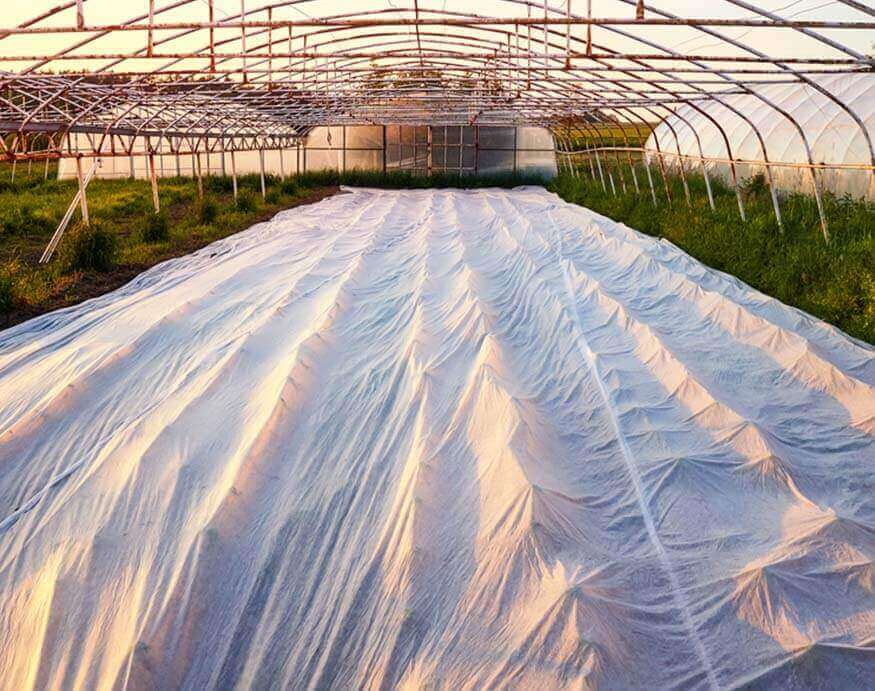
Another way to insulate your soil is with row covers. Unlike mulch, row covers allow the soil’s heat to radiate up to your crops’ foliage.
Row covers typically consist of woven fiber sheets that are light enough to let sunlight in but thick enough to trap warm air inside. But other types of material can be used for the same purpose.
Gallon milk jugs with the bottom cut off can be placed over smaller plants, while transparent five-gallon buckets for larger veggies. Plastic row covers work well for covering large areas.
Unlike traditional row cover material, these types don’t let moisture escape or allow for air circulation. You’ll have to keep an eye on your plants to be sure they aren’t becoming overly saturated, as this can lead to problems with fungal growth. One good defense against this is to remove these plastic covers on warm days.
The Wrap Up
When it comes to heating a greenhouse, the best solution often includes multiple options from our list above.
By combining techniques like passive solar, hot water heating, and an electric or kerosine heater, you can maximize your greenhouse temperatures without overspending. Combine these multiple heating techniques with some of our additional heating considerations, such as growing the right plants, mulching the soil, and maximizing thermal mass, and you can have a productive greenhouse even during the coldest winter months.
Have questions about heating your greenhouse? Ask us in the comments section below!